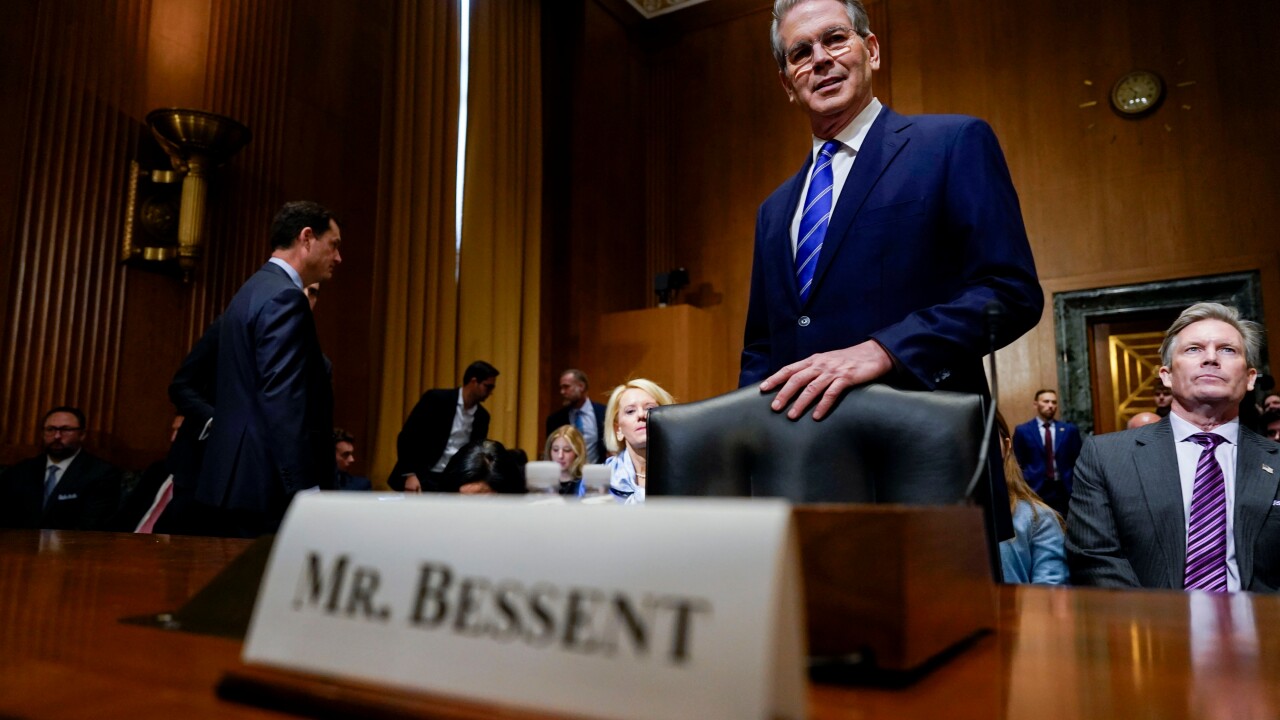-
The investigation into the lack of new bank charter applications has turned into a proxy battle over the Dodd-Frank Act, with Republicans and many industry players pointing a finger at the 2010 law.
July 13 -
WASHINGTON Despite banker arguments that post-crisis financial reforms are damaging the health of the financial industry, Federal Deposit Insurance Corp. Chairman Martin Gruenberg sought Wednesday to paint a different picture, citing evidence that banks are doing well.
June 15 -
Real regulatory relief for community banks and stricter oversight of the biggest financial firms are steps that can increase investor interest in new banks.
June 20 -
The agency plans to reduce the period of heightened regulatory scrutiny to which de novo institutions are subjected to three years, down from the seven-year period established in the wake of the financial crisis.
April 6
A recent hearing before the House Oversight and Government Reform Committee examined why virtually
A study by the Federal Reserve Bank of Richmond published in 2015 helped
The Richmond study analyzed whether this pattern was similar to prior recessions and found it was very unusual. In all prior periods, the quantity of new bank applications dipped during the recession. But they never reached zero, and they quickly rebounded to normal levels during the recovery. But following the last recession, the numbers dropped virtually to zero and remain flat-lined today.
This is a matter of serious concern. The banking system is not static. The Richmond study describes well how the industry is dependent on growth and renewal.
The dynamic nature of the banking industry is illustrated by what happens as existing banks grow. Maturing institutions tend to alter their customer base, changing their products and services as they attempt to reach out to new markets. Newer banks can then pick up the slack, serving customers in less populated and rural areas on which the older institutions no longer focus.
Two bad outcomes will occur if new banks do not develop to fill in these gaps.
One is a lack of sufficient services for small businesses and consumers, which are primary drivers of the economy. Rural areas are particularly harmed.
The other concern is that a dearth of new banks will lead to the industry to become even more concentrated in a few very large banks. This could eventually undo the fundamental structure of the U.S. banking system, which has led to there being so many different banks in the nation relative to other countries. This structure largely derives from the
For much of early U.S. history, the federal government left bank charters and regulation entirely to the states. That ended with the Civil War, when the need for a single national currency to finance the war resulted in the passage of the National Bank Act and gave birth to the dual banking system.
Decentralization, however, remains as fundamentally important today. "Too big to fail" highlights the risks if banks grow too large to effectively be regulated or even managed.
While fair-lending rules and the Community Reinvestment Act help ensure that rural, minority and lower-income areas have access to financial services, a more effective policy is the traditional one of enabling new banks to form when opportunities arise to profitably serve customers and develop new technologies.
There is also the issue — not unique to banking — that an industry not growing and innovating is dying. The Richmond study describes many factors that cause the number of established banks to decline, primarily through consolidation and acquisition. Without new banks, the needs of the people and communities in the gaps will either grow or credit will originate outside the banking system. This trend is clearly demonstrated by the declining market share of banks, which was about 60% at the end of World War II but today is only about 20% of the nation's credit markets.
This is a dangerous trend for the nation and the economy. An ideal economy would have at its core a wide array of well-regulated banks. Because of regulatory factors, banks are not always the most efficient or innovative providers of financial services. But they are the most stable financial institutions servicing our communities and are the least likely to create asset bubbles.
Credit drives the economy today and a stable supply of credit is a critically important policy goal. Banks mostly originate loans to hold them, which requires a direct interest in credit quality and provides an income stream to support the bank in a downturn. Other credit providers primarily originate loans to sell and must constantly originate new loans to generate fee income, which can be challenging in bad market conditions. The Great Recession of 2008, which was the first recession caused by a disruption in the supply of credit rather than a drop in demand, was a clear example of the instability lurking in an economy dominated by originate-to-sell lenders.
The good news is research like the Richmond study suggests regulatory policies have a significant role in the dearth of new banks, not entirely economic conditions. It is not surprising that regulators tightened their standards during the recession, but the time has come to readjust for the good of the economy. Hopefully the recent hearings in Washington mark the point where that pendulum begins to swing back.
George Sutton is an attorney at Jones Waldo Holbrook & McDonough. From 1987 to 1993, he was the Utah commissioner of financial institutions.





